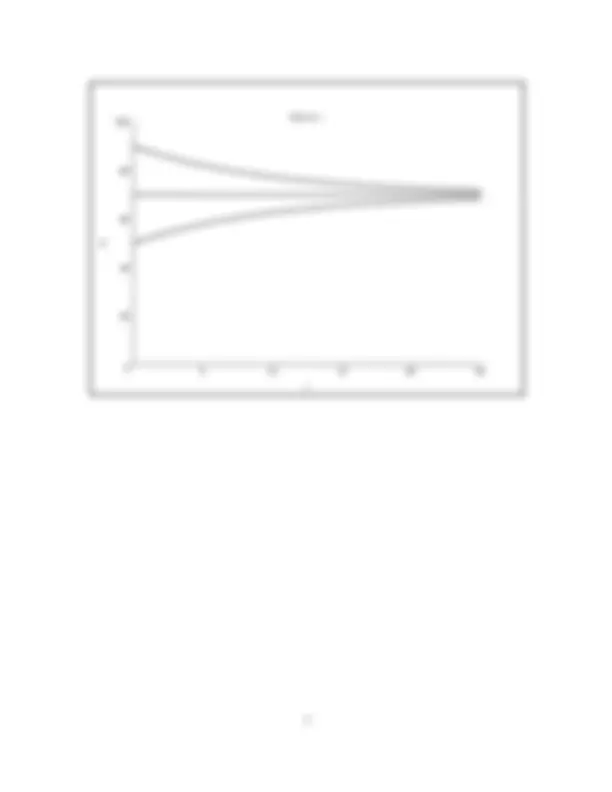



Study with the several resources on Docsity

Earn points by helping other students or get them with a premium plan


Prepare for your exams
Study with the several resources on Docsity

Earn points to download
Earn points by helping other students or get them with a premium plan
Community
Ask the community for help and clear up your study doubts
Discover the best universities in your country according to Docsity users
Free resources
Download our free guides on studying techniques, anxiety management strategies, and thesis advice from Docsity tutors
Material Type: Notes; Class: Differential Equations; Subject: Mathematics; University: Colgate University; Term: Fall 2002;
Typology: Study notes
1 / 2

This page cannot be seen from the preview
Don't miss anything!


Math 308 Differential Equations Fall 2002
Solving The “Coffee Cup Problem”
The differential equation for H(t), the temperature at time t, is
dH dt
= k(70 − H).
Note that H(t) = 70 (1)
(i.e. H(t) is the function with constant value 70 ) is a solution to the differential equation. Now assume that H(t) 6 = 70. We treat dHdt as if it really is a fraction, and rewrite the differential equation as
dH H − 70
= −k dt,
and then integrate both sides: (^) ∫ dH H − 70
k dt.
This gives us ln |H − 70 | = −kt + C 1.
Note the absolute value on the left; recall from Calculus that
∫ (^) dx x = ln^ |x|^ +^ c. Now exponentiate both sides to obtain |H − 70 | = e−kt+C^1 = eC^1 e−kt^ = C 2 e−kt,
where C 2 = eC^1. (Note that C 2 > 0.) Now, if H − 70 > 0, then |H − 70 | = H − 70, and we have
H(t) = 70 + C 2 e−kt. (2)
If H − 70 < 0, then |H − 70 | = −(H − 70), and so
H(t) = 70 − C 2 e−kt. (3)
Thus, the solutions to the differential equation are given by (1), (2), and (3). For this example, we see that we can combine these three formulas into one expression that includes all the solutions:
H(t) = 70 + C 3 e−kt,
where C 3 is an arbitrary constant. If we are given an initial condition H(0) = H 0 ,
we can find C 3 in terms of H 0 by evaluating the solution at t = 0 and setting it equal to H 0 :
H(0) = 70 + C 3 e^0 = 70 + C 3 = H 0 ,
so C 3 = H 0 − 70, and the solution to the initial value problem is
H(t) = 70 + (H 0 − 70)e−kt.
The following plot shows the solutions for H 0 = 90, H 0 = 70, and H 0 = 50, with k = 0.1, for the time interval 0 ≤ t ≤ 25.
H(t) vs. t
0
20
40
60
80
100
H
5 10 15 20 25 t